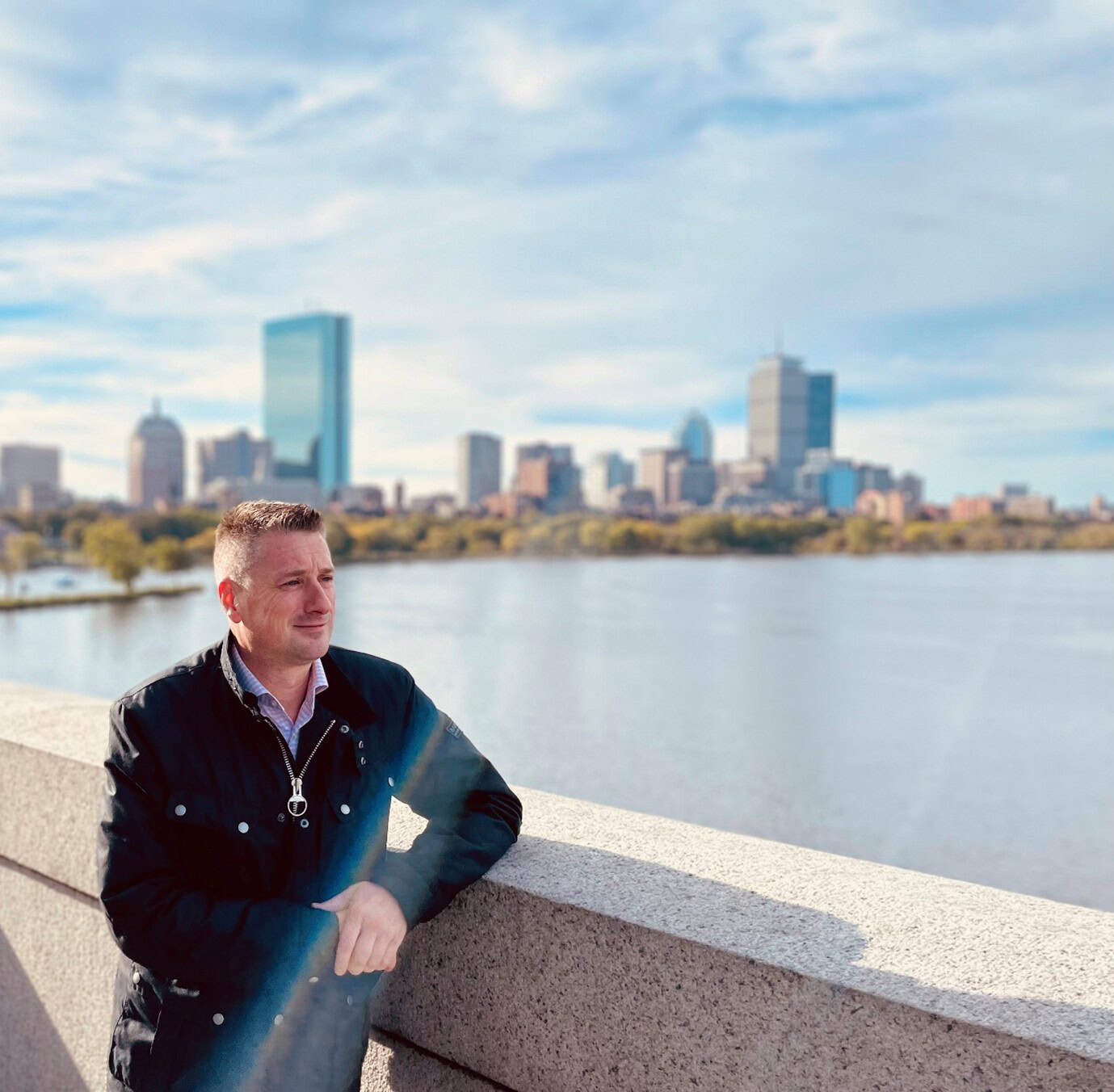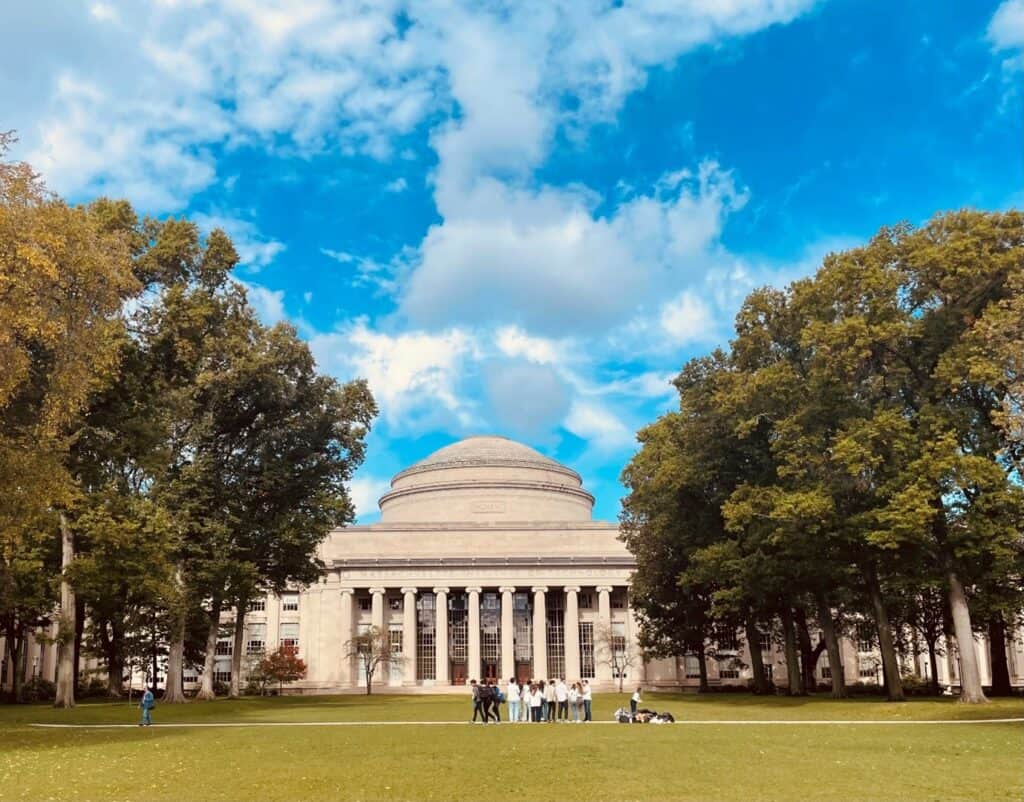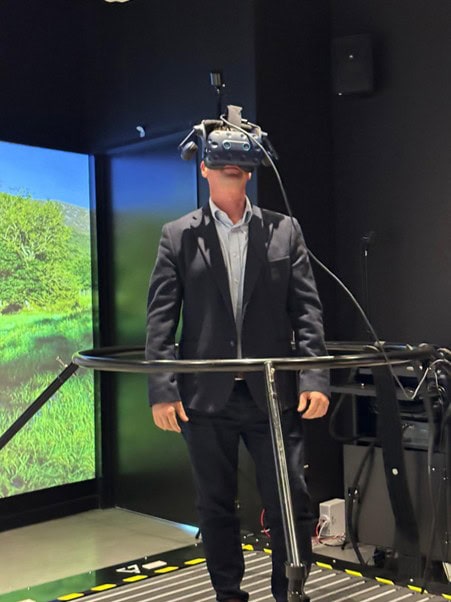
I recently went on a learning visit to the US to build and deepen our international skills alliances and work with colleagues at MIT, Harvard and tech partners in Boston and New York. Apart from the drum beat of the Drop Kick Murphy’s echoing in my brain, there is another rhythm to leaving London’s ports for Boston’s innovation corridors. One port of trade gives way to another port of ideas. I really travelled not to observe but to inquire: how do we build innovation and skills ecosystems in the UK that are not only technically capable, but civic-purposed — especially as we embrace artificial intelligence?
Ecosystems before Infrastructure
Whilst there I was lucky to visit several innovation centres ran by large US tech firms and university partners and I saw a working model of innovation as ecosystem, not simply workspace. Start-ups, corporates, academics, government teams all sit side by side. The key shift is from lab in isolation to eco system in motion.

The centres’ success rests on more than its equipment: it rests on connectivity, trust, and shared purpose of the human capital deployed.
For me, what this means for economic growth zones such as Thames Freeport and for the UK, is that we should design our AI interventions around two critical axis. Firstly, human capital interventions with skills at all levels and secondly use-case factories in sector verticals (healthcare, logistics, public services) not just R&D benches. This is not to devalue pure research, which is essential, but for fast AI adoption the technology stack must be curated for plug-and-play deployment so that innovation flows quickly from prototype to real world use cases. The ecosystem must include corporate anchoring, academic rigor, government regulation, with a startup fluidity.
I also very much see greater opportunity for the transatlantic dimension. For example, our freeport partners in Verizon, Dell, Nvidia and now MIT and Harvard presents a very strong UK-US “bridge” in innovation use-cases. Think co-development of validated stacks, cross-border pilots, and joint governance frameworks.
Governance, Adoption & AI Risk
At the Harvard Kennedy School I had the amazing opportunity to explore AI adoption in leadership with the inspiring Professor Mark Fagan, the preeminent leading voice in AI and we’ll now develop new training packages to launch soon in UK for SMEs, public and private sector leadership. His research beautifully unpacks how governments (and by extension large organisations) can adopt AI wisely. Our conversation explored how he encouraged that organisations should “sandbox” to test different ideas in a controlled environment to see what works and doesn’t work. Also, when we think about identification of AI use-cases we should be very intentional; what is the level of benefit and consequently what are the costs? Areas of discussion in my view currently missing from UK discussion.
From this discussion I think emerged three principles that speak directly in support of our agenda in Thames Freeport. Firstly, use-case first, technology second. Marc emphasises identifying the pain points in service delivery and then asking: “Is AI the best solution?” This means we must engage deeply with real operational challenges (e.g., inbound logistics, public-service optimisation, ageing workforce intervention, educational performance) and then match AI approaches to those challenges.
The second is thinking properly around controlled experimentation. The notion of sandboxes allows us to pilot, learn, adapt without full scale rollout and risk. For example, within the Freeport we are establishing AI Sandbox for public-private pilots (in logistics, energy, port operations. Community health and construction ) before full deployment. It means we can start now and claim the AI advantage rather than wait for perfect conditions. It’s unlikely business will ever be ready or have capability and capacity to go straight at scale.
The third element worth deeper consideration is that of AI governance. Professor Fagan noted that the real question is not about naming principles but how you operationalise them. “The basic concepts are normally the right basic concepts. The question is: How does it get operationalised? … Who has the ability to see how the algorithm is making its decisions?” In the UK context this means that our developing work in AI must embed governance mechanisms within every innovation pipeline: risk assessment, strategy design, human-in-loop design, transparency, data access, audit trails, bias mitigation.
At a deeper and more conceptual level across my short time on MIT and Harvard campuses, through countless rich discussions, I felt we must now recognise that AI adoption is as much about organisational change (skills, culture, processes) as it is about algorithms. The technology is enabler, but governance, leadership of change and practical adoption is where the real juice is.
Regional Innovation
Another Boston anchor was the influence of the MIT REAP (Regional Entrepreneurship Acceleration Programme). The insight is simple yet profoundly obvious: place matters. Innovation thrives when five actor groups (government, university, corporates, entrepreneurs, risk capital) converge with common agenda, metrics and trust. This approach has practical applications to regional development organisations and those that support them whether in freeports or Mayoral Combined Authorities. It requires the creation a governance covenant across these actors around AI deployment, skills development, and shared outcomes (e.g. jobs, productivity, regional growth). Sensibly, in policy I think we should more widely think how to use organisations such as freeports as the living testbed ; where new innovation forms are launched, learned and scaled. In short: perhaps the UK must treat innovation not as a national broadcast but as a regional composition. Thames Freeport is an exemplar of that in action but needs to be built out further and faster. Policies such as AI Growth Zones and devolution could accelerate this if used correctly.
Innovation Social Infrastructure
The final and one of the most under-appreciated components of innovation ecosystems I witnessed is in social infrastructure. In Boston I observed the Venture Café model: shared spaces where start-ups, corporates, academics and policy-makers gather with no agenda besides connection and conversation. The power is informal, unpredictable—but real. Why this matters for UK is not to be underestimated.Innovation isn’t just labs and code; it’s networks, serendipity, cross-discipline collision. This is especially important in a region with multiple stakeholders (public, private, academic), where trust and community formation accelerate adoption of AI and innovation. We are now working with the new London Venture café on designing some exciting programmes.

Navigating the Voyage
Across my visit I began to elicit key strategic questions for Thames Freeport and arguably broader UK and those thinking about regional innovation that I’m happy to share and think about together:
- How do we design our AI tech stack so that it is modular, interoperable, trusted and deployable across sector-vertical pilot projects which balances technology and people in equal measure?
- How do we further build transatlantic partnerships (US–UK) with corporates and research institutions so that the UK becomes the application ground for global AI use-cases?
- How do we embed considerations for people, governance, risk and adoption frameworks from day-one—not as bolt-on compliance but as integral to our innovation model?
- How do we activate regional place-based innovation (via REAP-style frameworks) so that economic zones become a living ecosystem of innovation rather than a standalone solutions?
- How do we nurture the social ecosystem of innovation (via café-like spaces, inclusive events, networks) so that the human connections and serendipity that fuel innovation are present?
Journeying to “US tech land” was not about importing a blueprint but importing possibilities. The United Kingdom holds unique strengths: universities, rich regional potential, and industrial heritage. What we must do now is pair that with: investment , ecosystem mindset, governance maturity, and human-centric innovation. In the age of the thinking machine, we should not abandon the thinking human. The future of Thames Freeport and the entire regional innovation strategy rests on weaving together people, technology, governance and place.
I may have shipped off to Boston but returned home ready to launch. All aboard!
About the Author
Stuart Rimmer MBE
Stuart is the Interim Chief Executive at Thames Freeport, a regional economic development zone and is a Visiting Professor of Leadership at BPP University, London.

